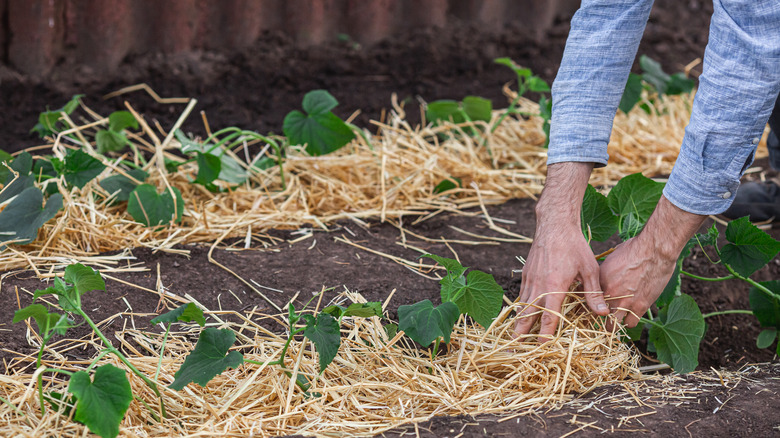Straw mulch is a very helpful addition to any budding garden. Not only does it help reduce weed growth, keep the soil cooler during blistering summer months, and help retain moisture for longer, but it can also discourage root rot and visiting pests. Because of that, many home gardeners use it to mulch their garden beds. However, there is a science to using it; you can’t just dump a bale onto your vegetable patch and call it a day. There are certain rules to utilizing it, such as only using straw and not hay, not mulching up to the plant stem, and making sure it’s at least 4 inches deep. But most importantly, you want to make sure you don’t lay it down too early. You want to wait until your seeds have grown for a few weeks before adding your mulch.
Putting down straw mulch too early is one of the biggest mistakes you can make because it will kill off your garden before it has a chance to grow. While it provides tons of benefits to growing plants, it can have the opposite effect on seedlings. Here’s why.
Why you need to wait a few weeks before straw mulching

It might seem like common sense to add your straw mulch right after planting your vegetable seeds. After all, you don’t want weeds to start popping up, and the seedlings would benefit from the extra water retention and nutrients from the mulch. However, it can have the opposite effect by suffocating the seeds before they have the chance to germinate. That’s because it will block out the sun. The straw will block the veggie seeds from sprouting much in the same way that it blocks weed seeds from growing — it hides the sun, making it difficult for them to get enough nutrients and energy to sprout. Instead, wait until your seedlings grow 2-3 inches tall before laying down the straw.
However, there is one exception to this rule. If you’re planting beans or peas in your veggie patch, a thin layer of straw can help protect the crop from hungry birds. In this case, the risk of suffocating is less than the risk of being eaten by wildlife. Just make sure not to overdo it. Instead, use a light hand with the mulch to allow plenty of sunlight to get through.



